Latest update February
2014
See publications to
date below
For
recent guest church sermon see Big Bang and God
Research Interests -
For amazing video of the material described below visit:
http://vimeo.com/32001208
or even better
http://vimeo.com/34152211
Aeronomy and the Photochemistry
& Space Physics of
Earth's Upper Atmosphere:
Ian McDade's research activities are primarily
in the areas of 'Optical Aeronomy ' and 'Space Physics'.
He uses ultraviolet, visible and infrared measurements made from the
ground, rockets and satellites to study processes that produce light in
Earth's upper atmosphere - such as the 'Nightglow' and the 'Northern
Lights' or 'Polar Aurora'. The Nightglow is
light emitted by a glowing shell of Earth's atmosphere about 100 km above
the surface where the pressure is less than a millionth of the surface
pressure and the temperature can drop below -173°C ~ 100 K. Unlike
the Polar Aurora which is sporadic, caused by hot electrons injected
from above and most prevalent in polar regions, the Nightglow exists
all over the globe, is fairly constant in intensity and is caused by
chemical reactions in the very cold rarefied air. It is sometimes
referred to as the Permanent Aurora and actually occurs
during the day as well when it is called the Dayglow.
Unfortunately, the human eye is not sensitive enough to see the Nightglow
from Earth but if our eyes were about ten times more sensitive we would be
aware that the sky is pea green at night! Astronauts, however, can
clearly see the Nightglow when they look towards the horizon where
geometry amplifies the intensity of the Nightglow by a factor of
about a hundred as shown below.
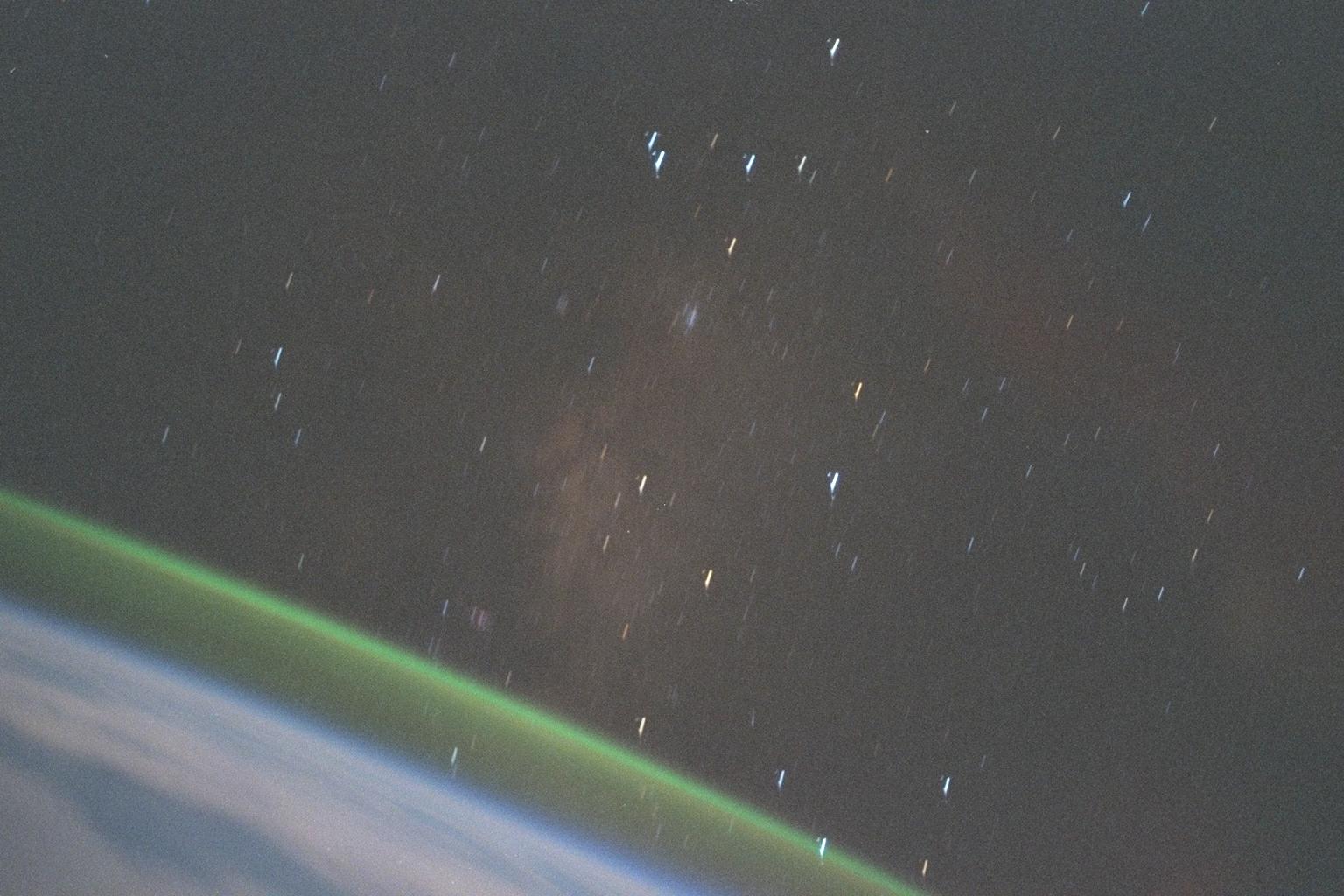
The
Nightglow as observed from Space.
The
lower left segment is the moonlit solid Earth and cloud tops and the green
arc above it is the
Nightglow
layer located about 100 km above the surface. The bright speckles are
local stars streaked by the movement
of the spacecraft during the exposure. The diffuse
blob towards the centre is distant
galactic light, diffuse aurora, or local ionospheric
emissions.
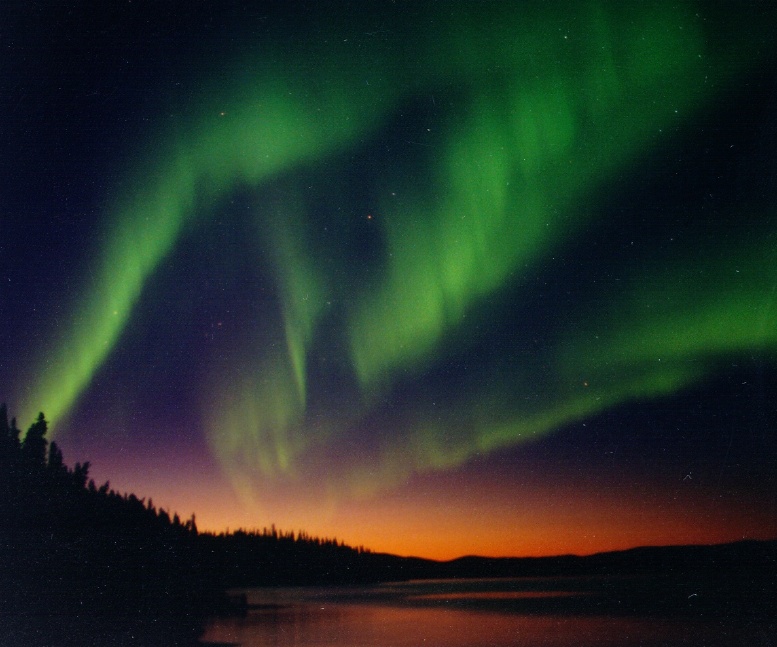
Earth's Aurora as observed
from the ground shortly after sunset
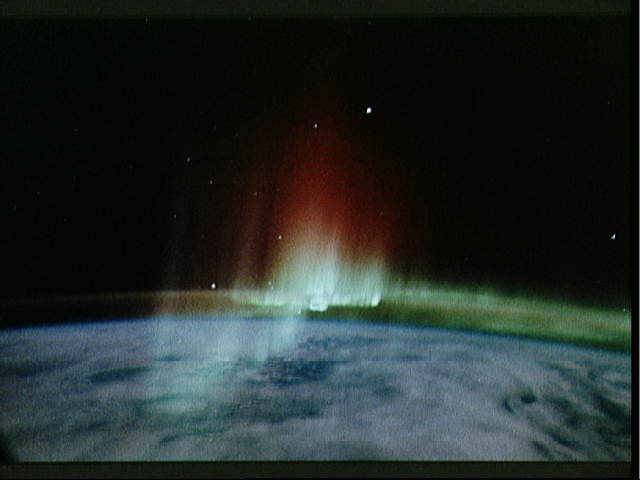
Earth's Nightglow and Aurora
as observed from space
His research focuses on attempts to understand the physics and the chemistry
of these processes and the development of Remote Sensing techniques
which exploit these phenomena to study, and monitor, the evolving state of
Earth's upper atmosphere.

The
GEMINI (General Excitation Mechanisms In the NIghtglow)
rocket experiment
launched
from White Sands Missile Range, New Mexico, in February 1994
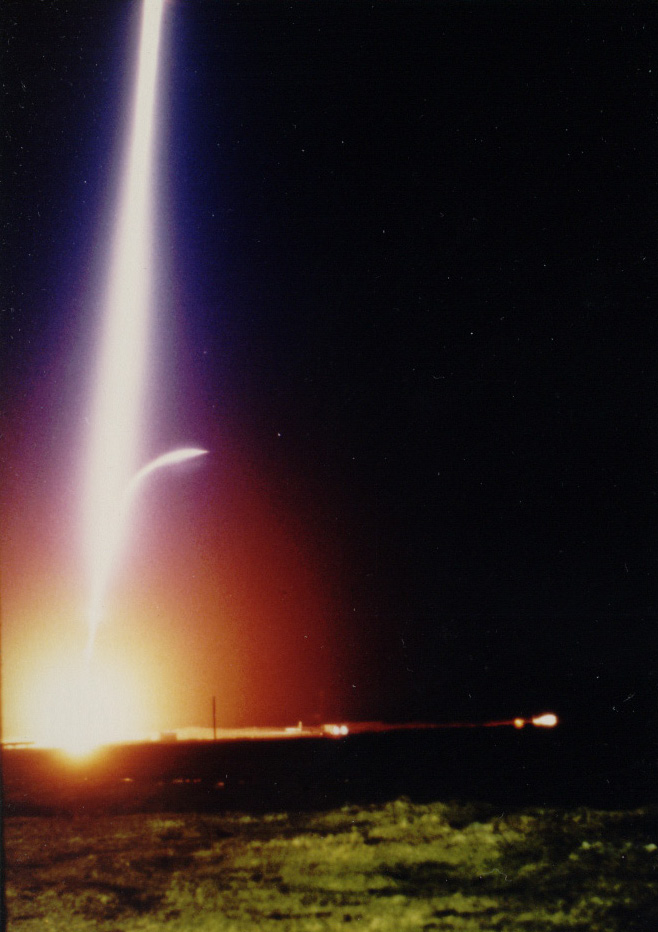
The
launch of one of seven ETON (Energy Transfer in the Oxygen Nightglow)
rockets from Uibhist
a Deas (South Uist),
The Outer Hebrides, Scotland, on 23 March 1982*.
These
rocket launches can be as colourful and fascinating as the object of the
research!
Previously, much of his research was performed using high
altitude rockets, such as the ETON and GEMINI rockets shown above.
Today most of his research is performed using observations made
from satellites such as the Odin satellite depicted below.
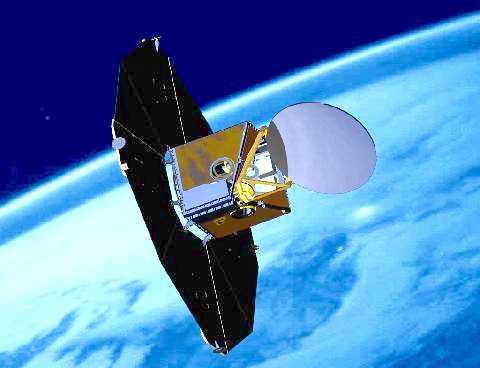
|